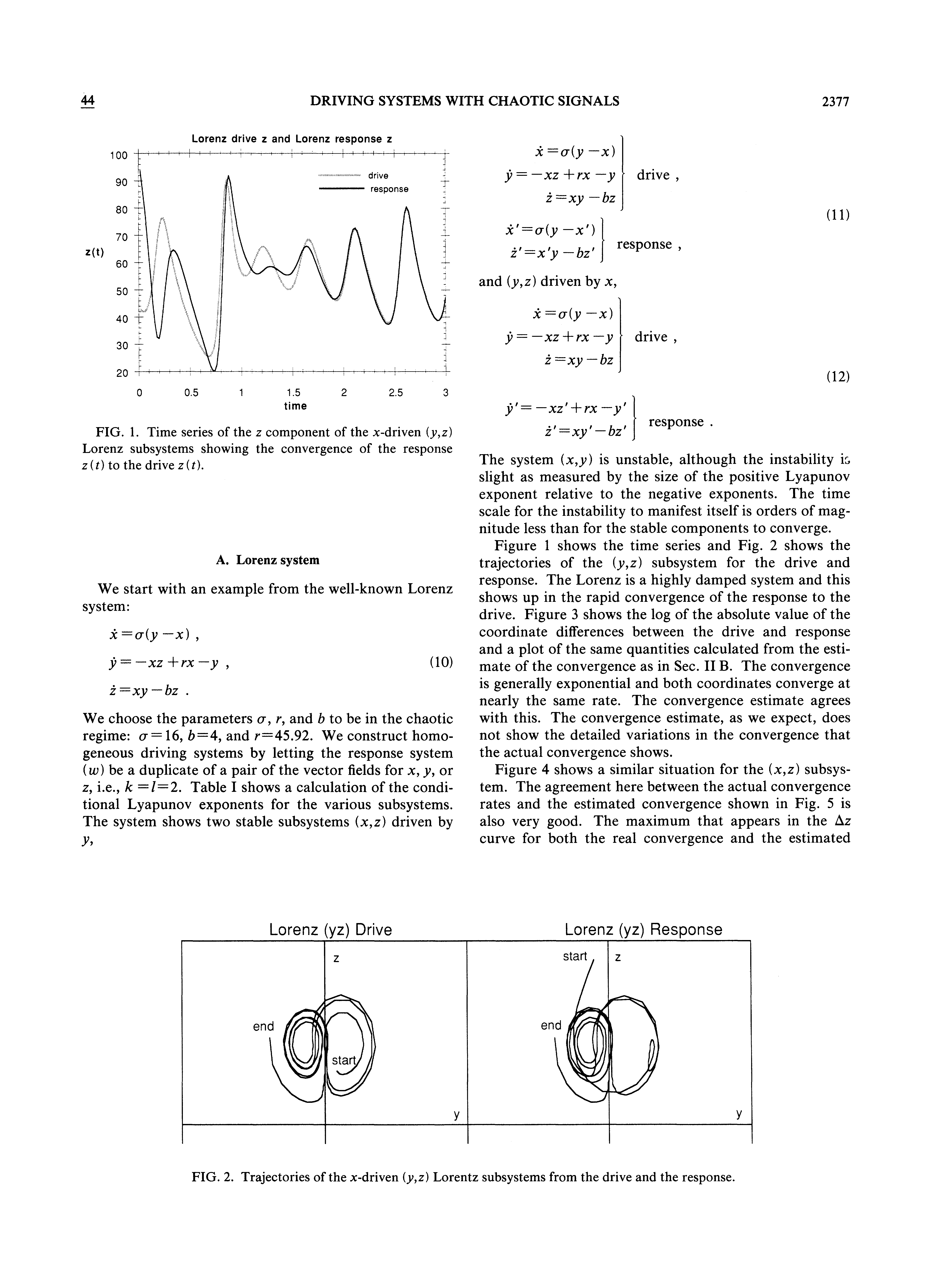In this attached image, we can see that the Lorenz chaotic attractor can show Master-Slave (Drive-Response)configuration where the Master/Drive system is driven by either y cordinate or x-coorinate.In this attached image, the differential equations for both the cases are given.
Using NDSolve and ParametricPlot3D, I am getting drive system of Lorenz attractor with initial condition $(x0=0,y0=1,z0=0)$ and the code is given below.
solution =
NDSolve[{x'[t] == 16 (y[t] - x[t]),
y'[t] == 45.92 x[t] - y[t] - x[t] z[t],
z'[t] == x[t] y[t] - 4 z[t], x[0] == z[0] == 0, y[0] == 1}, {x, y,
z}, {t, 0, 32, 0.0001}];
ParametricPlot3D[Evaluate[{x[t], y[t], z[t]} /. solution], {t, 0, 32},
PlotTheme -> "Scientific", PlotStyle -> Blue, ImageSize -> Small,
PlotRange -> Full]
But, I am unable to plot phase space diagram of slave system of this Lorenz system and the differential equations of slave system is given in attached image. As we can see , the slave system consists of 3-variables, but provided equations are 2 only. We know, we can solve equations if and only if no. of equations $>=$ no. of variables.
But, in this attached paper, we can see it is possible to get phase space diagram of slave system also. I do not know how to get this and which information is missing. Using NDSolve , I am not getting any result. What to do to solve slave system?


